The Ultimate Goldfish Guide
Everything You Need To Know To Keep Fish With Confidence
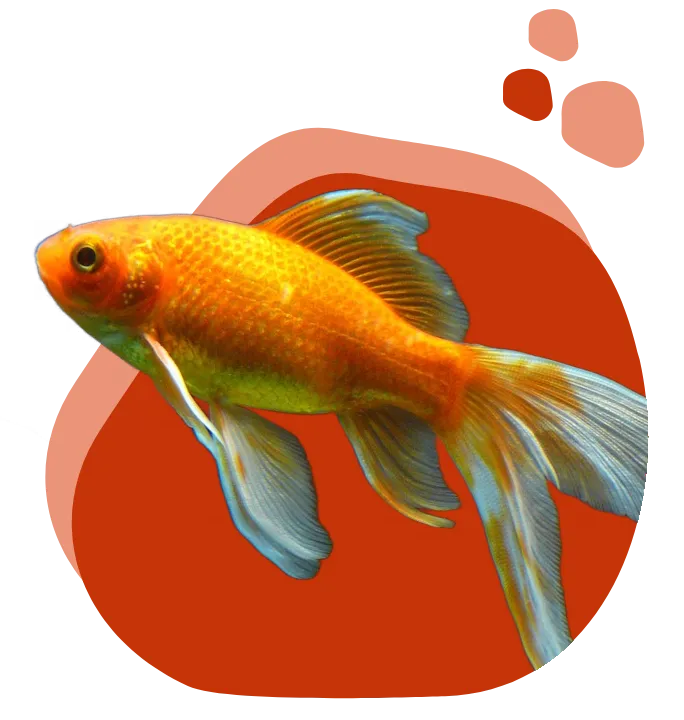
Learn In 3 Simple Steps

Step 1: Crash Course
Setting a realistic expectation to what owning a goldfish is really like.
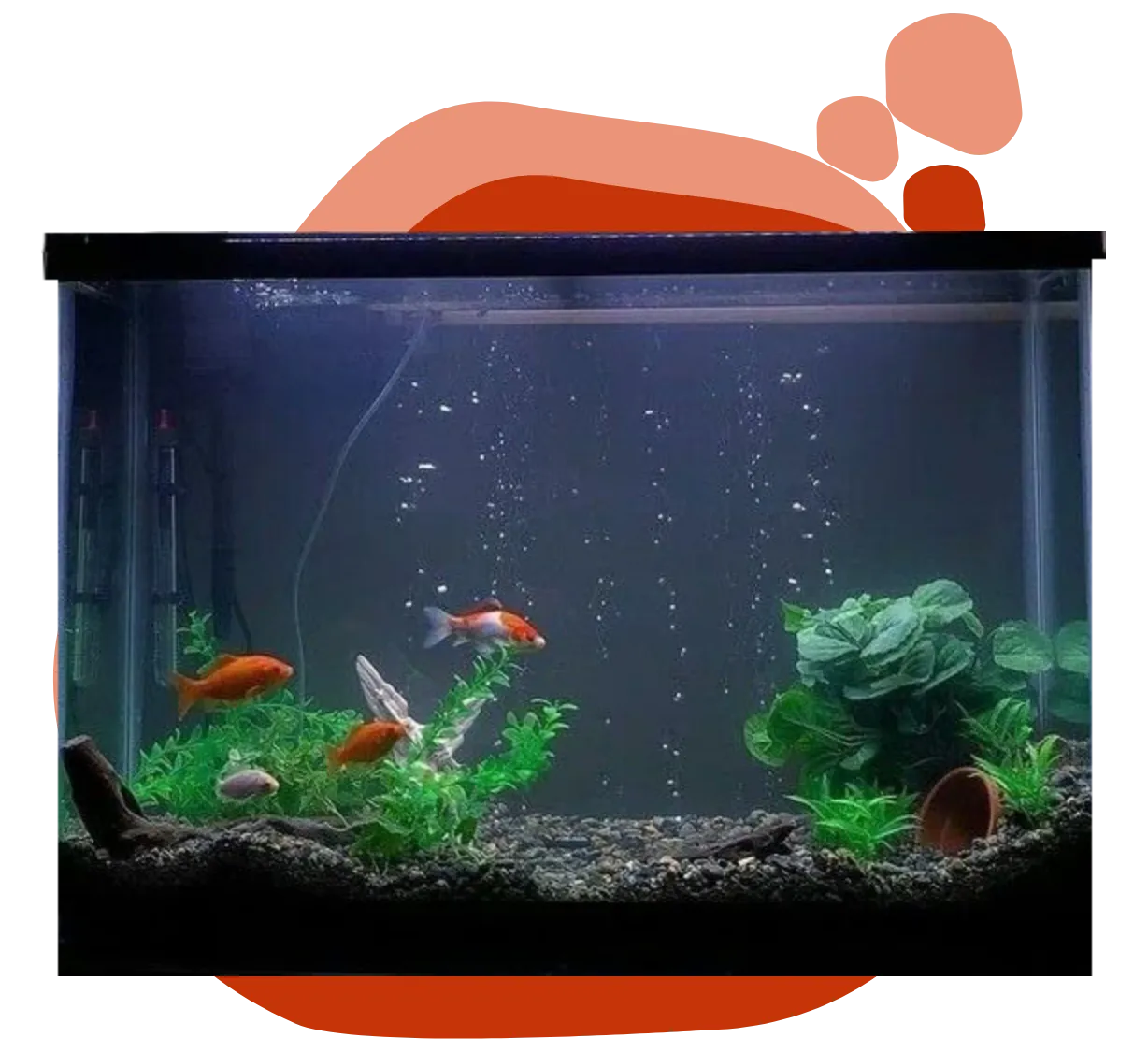
Step 2: Tank Zero to Hero
How to give your goldfish the right environment to thrive

Step 3: Easy Care Hacks
Everything you need to know about caring for your new goldfish.
So what is it like to own a fish? I’m sure you have a vague idea about what you’ll need to do, but for you to raise happy and healthy fish we need to cover all bases.
This is why today, we’ll cover:
- What are the daily and weekly tasks involved in caring for your goldfish.
- What are some of the cons to keeping a goldfish.
- How aquariums work- so you can be a more confident fishkeeper.
What's Required Of You
In A Nutshell
Feed: Twice A Day | 10 Minutes
Clean: Once A Week | 30 Minutes
Feed Twice A Day
Feed your goldfish twice a day with commercial fish food. For treats, use live food like brine shrimp or vegetables like cucumbers or zucchini.
Replace 25% Of The Water Weekly
Do a 25% water change about once a week. While changing, siphon the bottom of the tank and scrape algae if needed.
Your Myths About Bettas- Explained
One of the most persistent myths is that goldfish can thrive in small bowls. In reality, goldfish produce a significant amount of waste, and they require a properly sized aquarium or pond with adequate filtration to maintain good water quality.
Contrary to the popular belief that goldfish have short memories, studies have shown that they can remember things for months. While their memory might not be as complex as some other animals, they are not as forgetful as commonly thought.
While goldfish may not require the same level of interaction as some other pets, they do need attention in terms of proper care. Regular monitoring of their health, water quality, and maintenance of their living environment is crucial.
While it’s true that a goldfish’s growth can be stunted by inadequate living conditions, this doesn’t mean they will stay small forever. Stunting often results in health problems and a shortened lifespan. Goldfish need a spacious environment to grow properly.
Goldfish require a balanced diet, and not all foods are suitable for them. Feeding them a proper goldfish food with a mix of nutrients is essential for their health. Overfeeding or giving them inappropriate foods can lead to digestive issues.
Kind of commitment
On average, you’ll spend about 10 minutes a day feeding/ checking up on your fish and about 30 minutes a week cleaning the tank.
What about vacations?
You have about 10 days to 2 weeks that your goldfish can go with out food.
The key is to change the water right before you leave.
Moving With A Tank
Moving a smaller goldfish tank is manageable, but as the tank grows the more complex the task becomes.
Feeding Your Goldfish
In their natural habitat, goldfish are omnivores and primarily feed on a varied diet of aquatic plants, algae, small invertebrates, and insect larvae.
Since breeding insect larvae isn’t realistic, at home you’ll probably need to feed them just plain commercial fish food.
Those foods come in all shapes and forms and below are the most popular options for beginners.
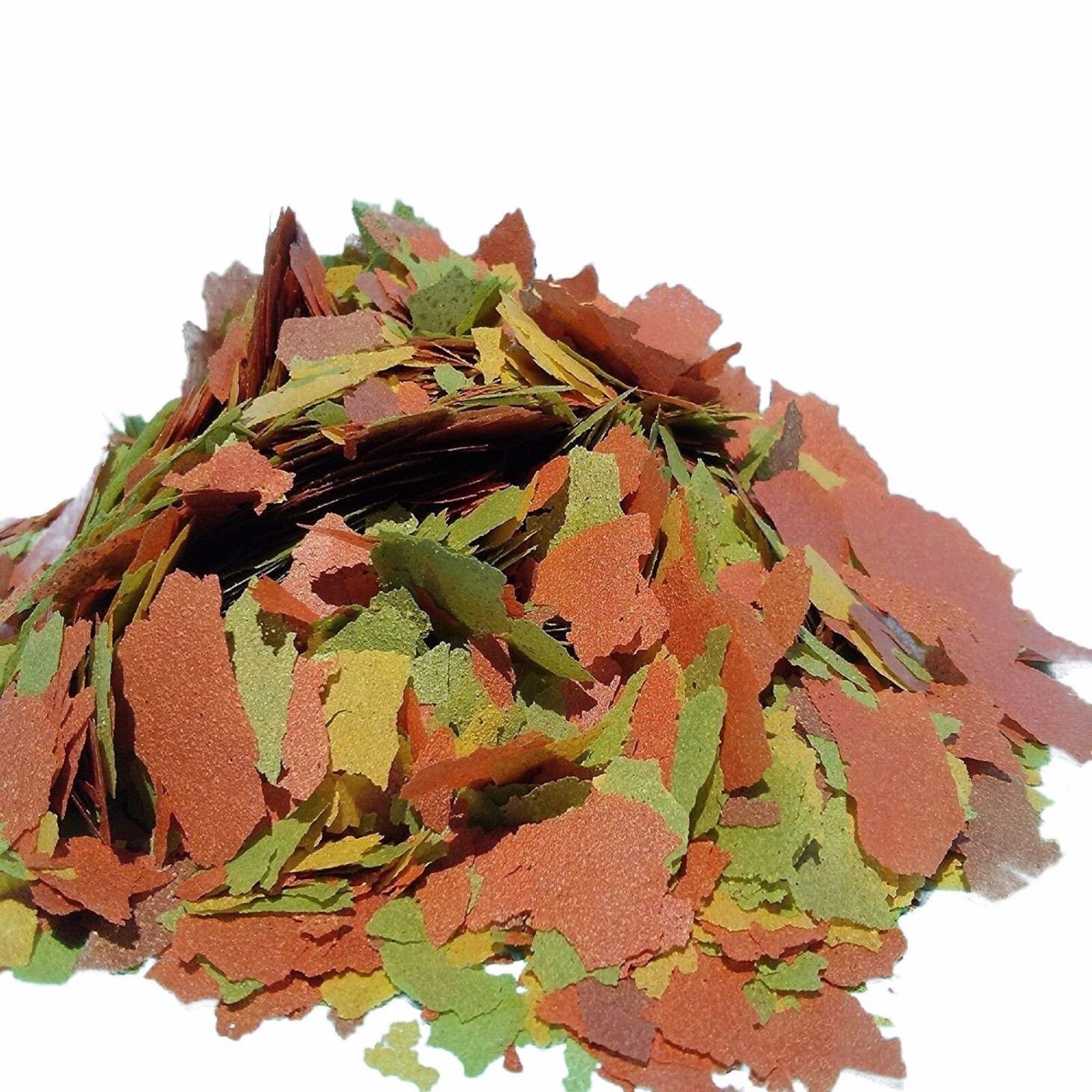
Fish Flakes
Thin, lightweight, and typically flat, resembling small, irregularly shaped flakes. Made from a combination of fish meal, plant matter, and other ingredients.
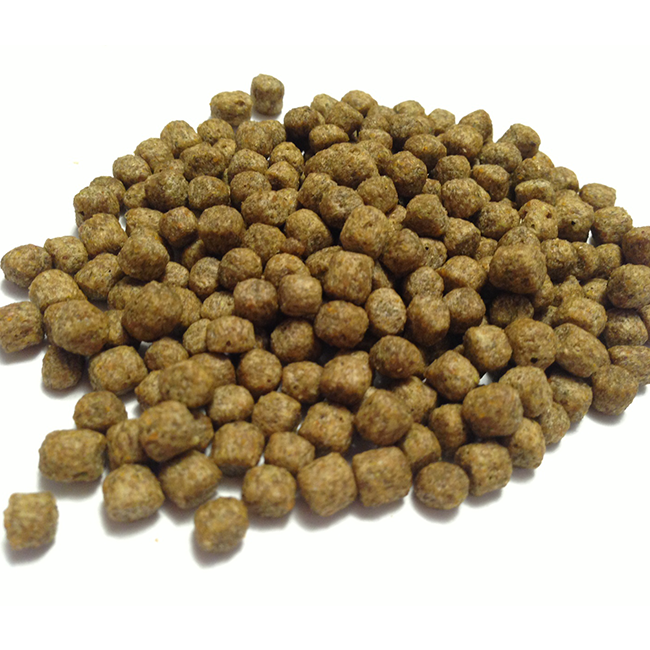
Fish Pallets
Form: Usually small, compact, and cylindrical or spherical in shape. Comprised of a mix of fish meal, grains, vitamins, and minerals.
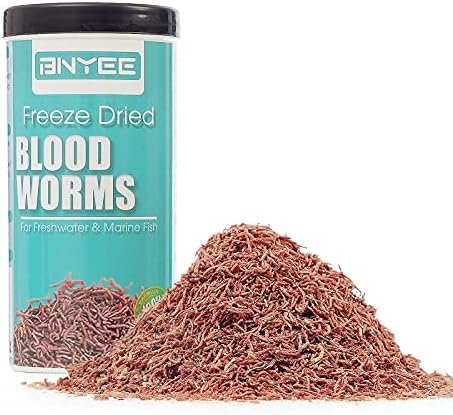
Blood Worms
Usually freeze-dried or freeze-frozen, resembling small red or brown tubular worms. Primarily made up of bloodworms (larval form of certain midge flies), high in protein.
Choose the option the you like most- at the end of the day all types achieve the same goal. As long as the food is labeled for goldfish- you’re good to go.
Treats
Treats allow you to spend more quality time with fish and interact with it.
And while your fish can technically live on treats- preparing and serving them is a bigger hassle compared to commercial food (and not to mention they are pricer).
Below are the 2 most common treats for goldfish:

Brine Shrimp
Brine shrimp is the most popular goldfish treat out there. You'll make a batch at a time and freeze leftovers in ice cube trays for later use. Compared to other live food options (like daphnia and vinegar eels) it produces the least amount of adverse smells.

Vegetables
Veggies are another popular snack for your goldfish. They'll be happy with virtually anything you'd feed them, like lettuce, peas, cucumbers, zucchini, carrots and spinach.
Cleaning The Tank
With the details about feeding under your belt, let’s turn our focus onto the second (and less fun) part of the process: cleaning.
Water Changing
This task is as simple as it sounds. We’ll get to why the water requires changing in the following sections, so for now let’s talk about how to tell a water change is due:
- You haven’t changed the water in a week
- You tested the water and the test indicated a change is needed
Maintaining a fish tank is more about keeping the water parameters within range. That’s about 95% of it.
When you are first starting out, you’ll need to test the water more frequently so you develop a sense of what to look for. I know it sounds very vague and abstract, but in reality, it’s really simple and doesn’t take long to figure out.
We are going to cover water changes and maintenance in detail in Chapter 3, so for now here’s an overview of what it’ll look like.
P.S.
his is about 95% of the process of a water change.
- Siphon out about 20-30 percent of the tank water.
- fill a separate bucket with fresh tap water, ideally the same temp as the tank water.
- Add water conditioner to the fresh tap water.’
- Add the conditioned water into the tank.
- Dump out the old tank water.
Siphoning the Substrate
As you are removing water from the tank, you’ll have a natural suction force with your siphon. Think about it like an underwater vacuum cleaner.
You’ll use this “vacuum” to remove debris off the tank floor.
Scrapping Algae
At last, we get to removing algae.
Algae is a lot more common in planted tanks than in tanks with artificial plants or other types of decoration.
If your tank calls for algae cleaning, you’ll just use a scrapper and the siphon will do the rest.

Algae in a fish tank
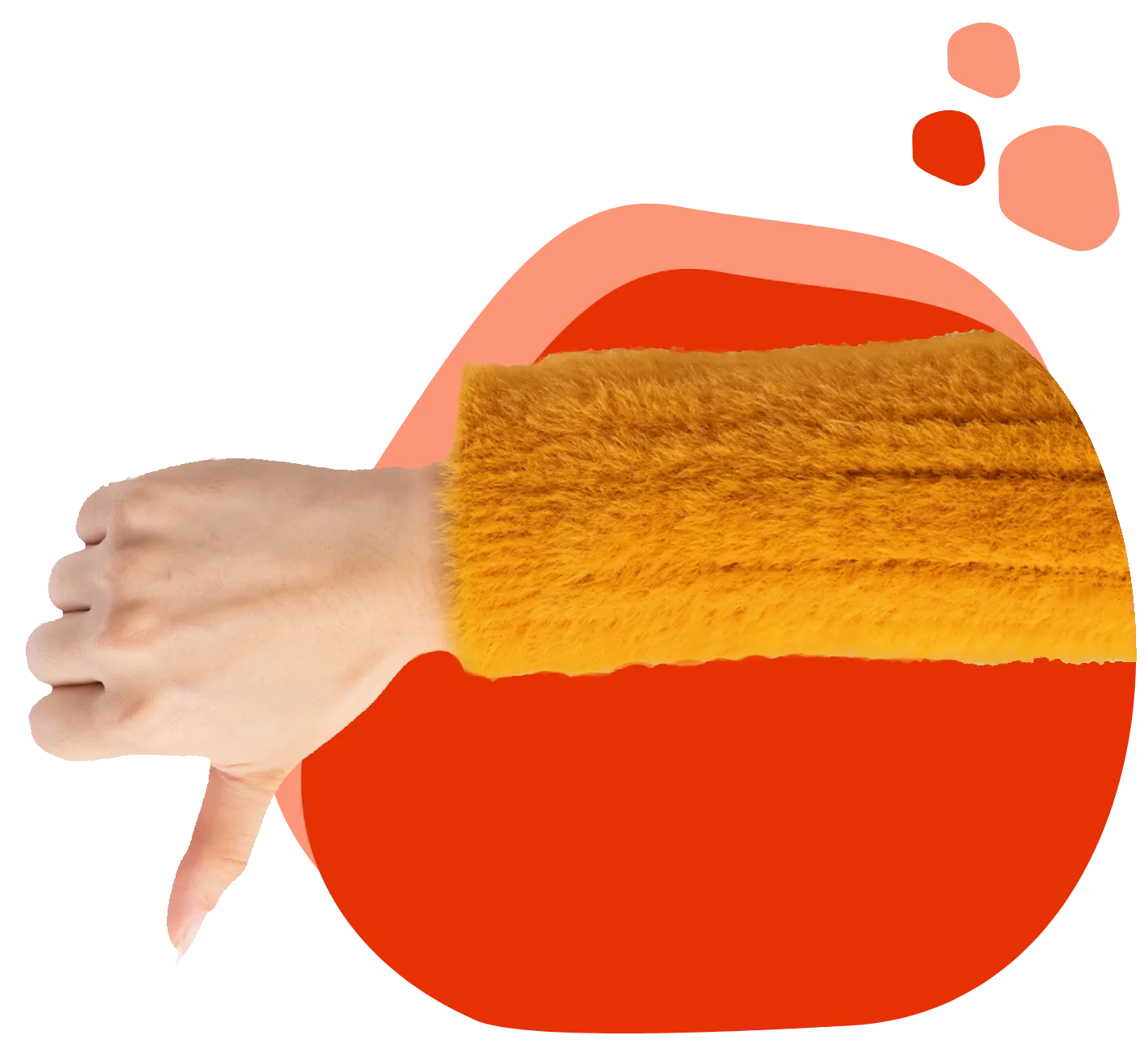
Cons Of Keeping Goldfish
And How To Prevent Heartaches
Goldfish are awesome pets, but all pets have drawbacks.
According to beginners, here are the top 3:
Large Space Requirements
Goldfish can grow quite large, and they need ample space to swim and thrive. Keeping them in a small tank can lead to stunted growth and various health issues. Providing an adequately sized aquarium or pond can be a challenge for those with limited space.
High Waste Production
Goldfish produce a significant amount of waste, and this can lead to rapid deterioration of water quality. Proper filtration and regular water changes are essential to maintain a healthy environment. The high waste output also means that goldfish tanks may require more maintenance compared to some other fish species.
Long Lifespan
While the long lifespan of goldfish is a positive aspect for many owners, it also means a long-term commitment. Some goldfish can live for several decades with proper care, so potential owners should be prepared for a significant time commitment.
Preventing Heartache
There are 2 very simple ways to give your betta the best life:
- Design the tank correctly with plenty of space and a powerful filtration system.
- Test the water often and change it when parameters fall below desired levels.
I know I’ve said before, but here it goes- we’ll cover that in detail in the next chapter.

How Aquariums Work
So You Can Be A More Confident Fishkeeper
Fish Tank Glossary For Absolute Beginners
You might have heard some terms in the connection of a fish tank. Regardless of what you know or don’t know- this will teach you everything you need to know.
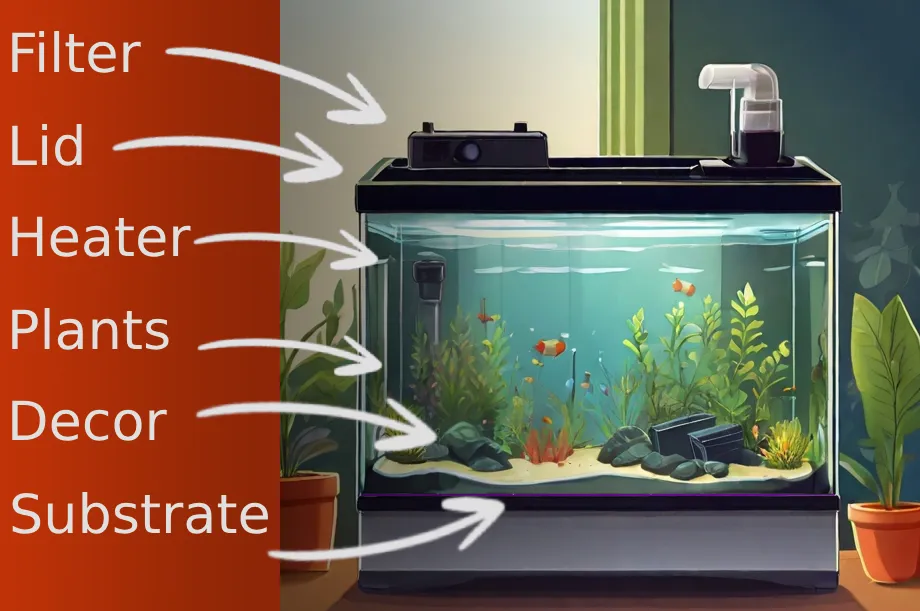
At this point you might begin the suspect that this list isn’t every possible aquarium related term. You are right- and it’s on purpose.
You are learning only what is relevant to you to keep a betta fish. There no point in explaining reverse osmosis water, for example, because you don’t need it (you’d need it if you had a saltwater tank, by the way)
Fish Tank Magic for Intermediates
For you to be a confident fishkeeper you’ll want to understand how your fish tank works, as this simple concept will help you troubleshoot issues and know what adjustments to make.
The foundation of your aquarium’s ecosystem is the nitrogen cycle. This natural process involves beneficial bacteria breaking down waste produced by fish poop and leftover food.
In nature, it happens naturally- mainly because beneficial bacteria are ample.
In your fish tank, it’s your filter that is responsible for introducing this bacteria.
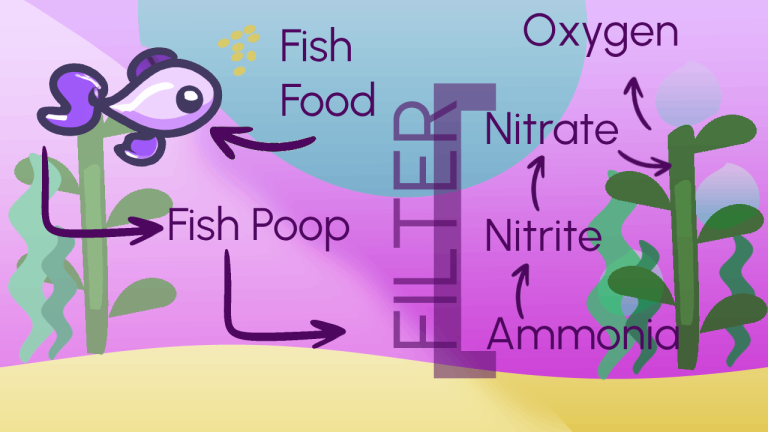
Recap
Before we move on to the next section, let’s round up everything we just talked about:
Caring for your goldfish requires a daily time investment of about 10 minutes a day plus 30 more minutes a week.
Caring for your fish entails feeding them and cleaning their tank.
Goldfish can live up to 10-15 years and get quite big (10-12 inches)
The single most important part of your fish tank is your filter. The filter allows you to go longer between water changes and helps balance the water in your tank.
Now that you have an idea of what the day to day duties of a fishkeeper are, let’s find out how to build the best tank for your goldfish.
